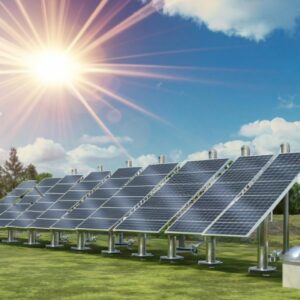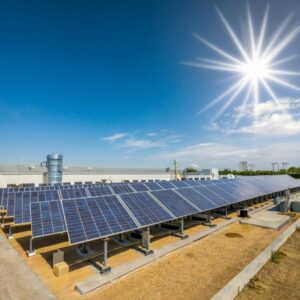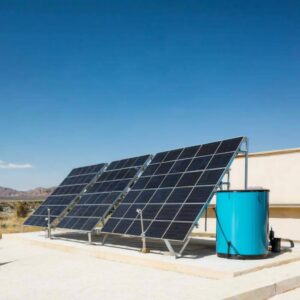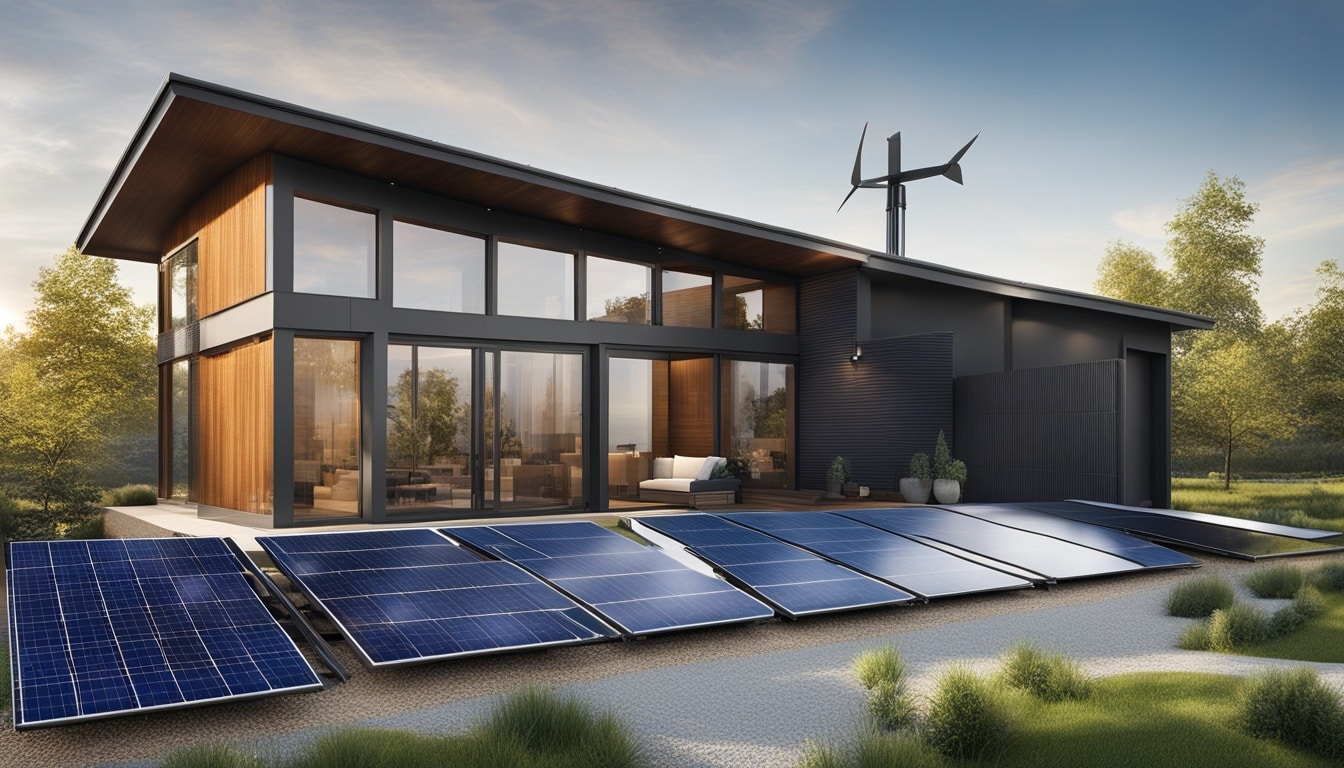
The solar power industry is facing challenges but still growing. Countries leading in renewable energy include Germany, Greece, and China. In the United States, places like Tennessee and New Jersey stand out.
One important factor in securing energy for the future is solar energy storage. This method lets homeowners save extra solar power in batteries. So, they can have power back up when sunlight is low or during outages.
Solar energy storage also evens out solar power’s ups and downs. It helps cut down on using fossil fuels. Now, with President Biden’s support and lower costs for batteries, many Americans can choose this option.
Key Takeaways:
- Solar energy storage provides a reliable backup during power outages and periods of low sunlight.
- It helps balance the intermittent nature of solar energy and reduces reliance on fossil fuels.
- The Biden administration’s focus on renewable energy is driving the adoption of solar energy storage.
- Battery systems are becoming more affordable, making solar energy storage accessible to homeowners.
- Solar energy storage contributes to a more sustainable and resilient energy future.
The Challenges and Potential of Solar Energy Storage
Solar energy storage has many benefits but also faces challenges. In California, the reduction of solar incentives has led to job losses and bankruptcies in the industry (solar industry challenges). China dominates the manufacturing of solar panels and components. This has led to a market overflow and reliance on Chinese imports. Despite the importance of battery systems for storing solar energy, their costs limit their use in homes. They’re mostly used in commercial settings (battery systems, residential solar).
Homeowners might face problems with maintenance if their panels come from unavailable or bought-out companies (abandoned panels). Yet, many incentives are still offered for installing solar and battery systems. States like Arizona are at the forefront, exploring hybrid solar setups. This innovation could lead to easier and broader solar energy storage adoption (solar industry challenges, battery systems, residential solar).
Despite these hurdles, the future looks bright for solar energy storage. As battery tech advances and prices fall, more people will be able to access this technology. The market is getting better, and creativity is driving towards a future where solar power is key for homes and businesses.
The Future of Solar Energy Storage
Solar storage is key to a cleaner, more reliable energy future. With it, people can save energy from the sun and use it when needed, even without sunlight. This is helped by better battery tech and solutions for older solar panels. By tackling these issues, the solar industry can build a stronger, cleaner power grid for all.
“Solar energy storage holds immense potential for creating a more sustainable and resilient energy future.”
Moving to renewables like solar is crucial for reducing our fossil fuel use and fighting climate change. Research and support from the government are making new breakthroughs possible. These advancements are critical for making solar energy storage more affordable and available to everyone.
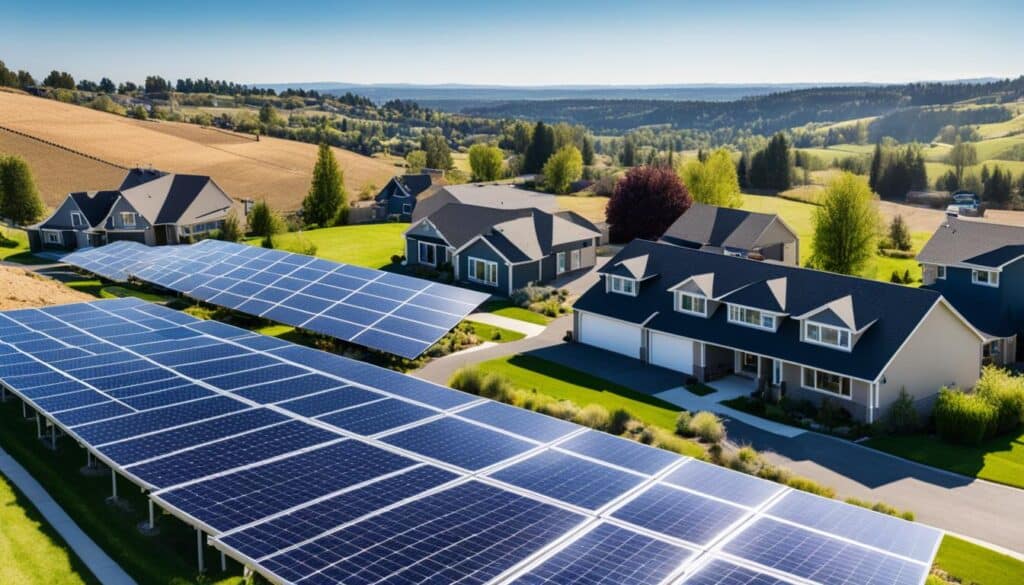
| Challenges | Potential Solutions |
|---|---|
| Reduced solar incentives | Advocate for government support and incentive programs to promote solar adoption |
| Saturated market and dependence on Chinese imports | Encourage domestic manufacturing and diversification of solar panel sources |
| Expensive battery systems for residential solar | Increase investment in battery technology research and development to drive down costs |
| Abandoned panels from defunct companies | Implement proper recycling and disposal programs for legacy panels |
Exploring Alternative Energy Storage Solutions
Aside from regular batteries, we’re looking at other ways to store energy. Pumped-storage hydropower is a key example. It uses reservoirs to store and release power.
It works by moving water up to a higher spot when there’s extra power. Then, when we need more power, the water is released downhill to generate it.
Underground pumped hydro is another cool option. It pumps water underground. Then, it uses the Earth’s pressure to push the water back up, creating power. This idea opens up new chances for storing renewable energy.
Quidnet is at the front of this work. They’re finding new ways to use underground reservoirs for energy storage. This, plus methods like pumped-storage hydropower, helps fix the problem of not always having enough renewable energy when we need it.

Benefits of Alternative Energy Storage Solutions
1. These technologies can store energy for a long time. This makes them good backups when there’s not a lot of power being made.
2. They’re good for the planet. They help us use more clean energy and less fossil fuels.
3. By saving extra energy for later when we need it, they help keep our power supply steady.
The Future of Renewable Storage Technologies
We’re always looking for better ways to store energy. This push for new technologies helps us build a stronger energy future.
Investing in these storage solutions can make our energy system cleaner and more reliable. Let’s work together to power our future with sustainable energy. This way, we can ensure energy for everyone for years to come.
Conclusion
The solar industry has its obstacles but it’s not a lost cause. For a successful energy shift and a safe, green future, we need a mix of private efforts and government help. If only business leads the change, it might cause market problems and unfairness.
Government support is vital. It includes help like subsidies and incentives, research, and development funds. These help smaller solar companies grow, support job training, and improve solar tech.
Using solar power with proper storage and other green tech puts energy control in our hands. This move helps create stronger, lasting communities. Tech is getting better every day, thanks to public and private backing. This progress promises a future where we can rely on clean, stable energy.
FAQ
How does solar energy storage contribute to energy resilience?
What role does solar energy storage play in achieving a sustainable future?
What are the challenges facing the solar industry?
Are battery systems expensive for individual homeowners?
What other energy storage solutions are being explored?
How can the government support the solar industry and energy transition?
How can individuals and communities contribute to a resilient and sustainable energy future?
Source Links
- https://www.newyorker.com/magazine/2022/04/25/the-renewable-energy-revolution-will-need-renewable-storage
- https://slate.com/technology/2024/02/solar-power-industry-rooftop-utility-good-bad.html
- https://science.osti.gov/-/media/bes/pdf/reports/files/New_Science_for_a_Secure_and_Sustainable_Energy_Future_rpt.pdf


